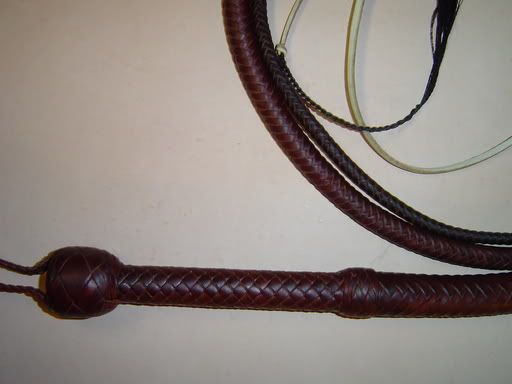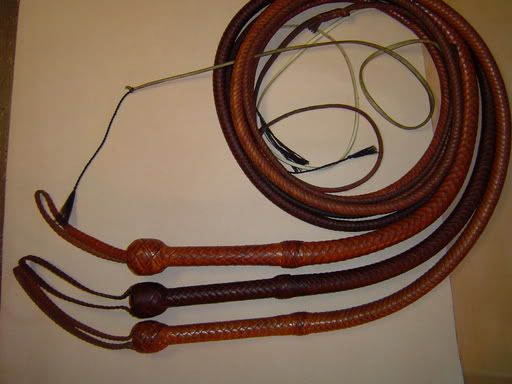To shellac or not to shellac: That is the questions which perplexes us.
Shellac's purpose on leather is to seal up the edges of the strands, among other things. It'll quickly come of the faces of the strands when you get to using it. In fact, I'd wager that by the time you get your whip broken in, the shellac will have cracked and peeled off the faces. But, it's a protectant to the edges of the strands. It helps keep water out of the leather grain. Liken it to sealing up the end of a piece of wood, which is much more willing to accept liquid, than the face of the same piece of wood.
But, one must imagine the tedium that sealing the edge of each strand would bring, post-construction. So, we lazy whipmakers

like to smear it all over the outside, so that some will penetrate into the edges of each strand, and seal it up. The shelac doesn't penetrate into the face of each strand, because it's not nearly as porous.
Make sense? Also, shellac helps to hold knots in place, and acts as a sort of glue. When I put corking on the tuning pins of my bagpipes, the glue was a shellac. Holds it in place just fine once dry.
Besides that, it makes your whip shiny, which we whipmakers know you all want!
Best Regards,
Paul Stenhouse
To make sure that I'm barely still on topic--That's a very nice looking whip that you've received from Paul Nolan. I especially like the shellac! I'd give Paul my endorsement anyday (in fact, I've sent a few people to him).


















